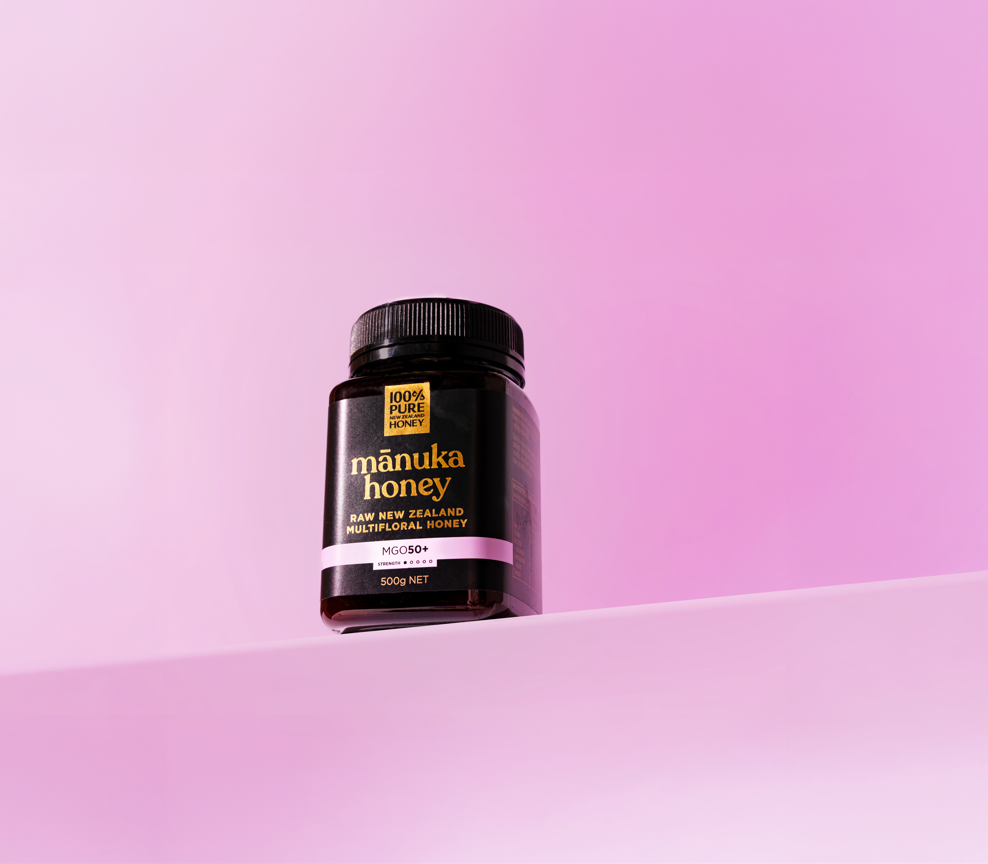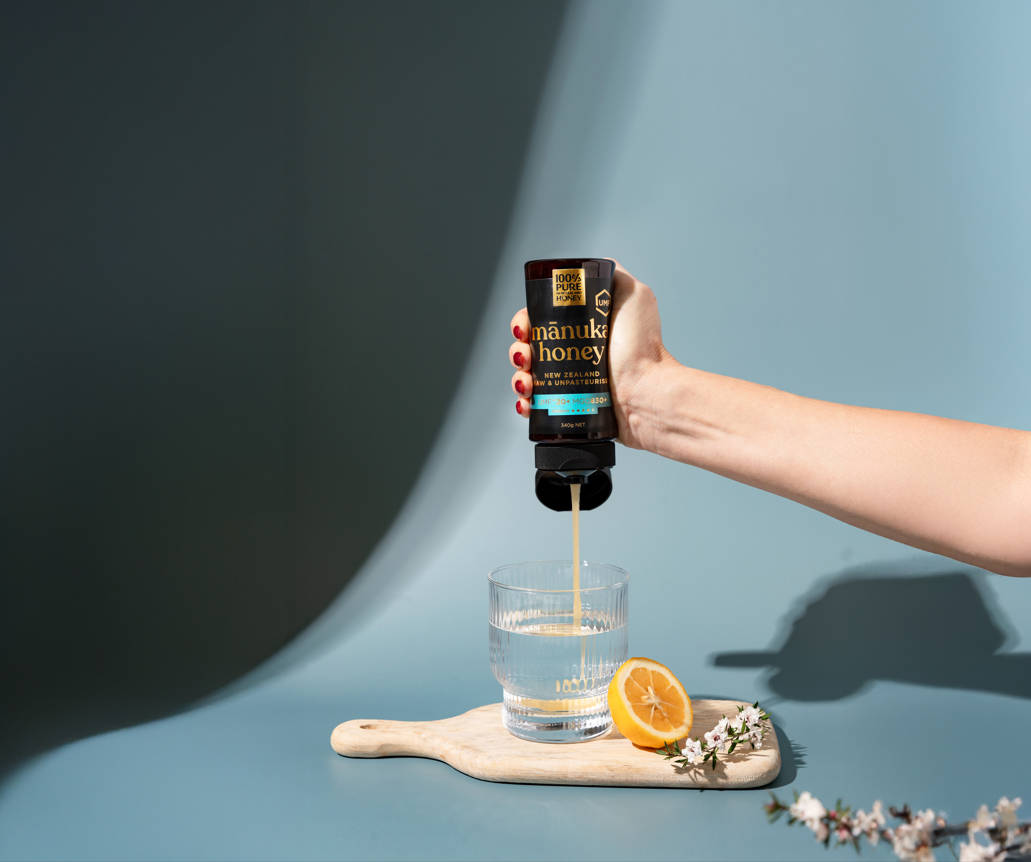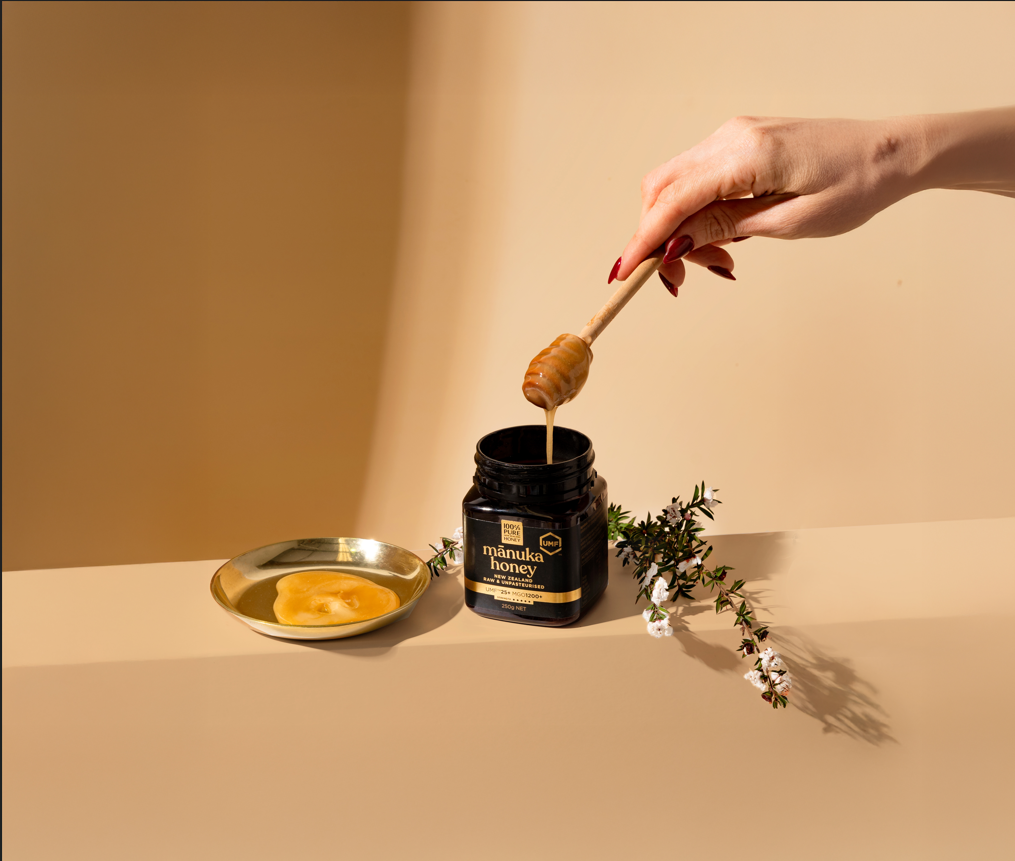What Does MGO Mean when it comes to Mānuka Honey (and Why Premium Jars Cost More)
If you’ve ever stood in front of a shelf of Mānuka honey and wondered what MGO 50, MGO 200, or MGO 500 means—and why some jars cost more—this guide is for you.
What is UMF™ and Why It Matters
UMF™ (Unique Mānuka Factor) is the internationally recognized grading system for authentic Mānuka honey, regulated by the UMF Honey Association (UMFHA). It ensures that every jar is tested for purity, authenticity, and potency, including key markers like MGO, leptosperin, DHA, and HMF.

What is MGO and How is it Related to UMF™?
MGO (methylglyoxal) is one of the signature antibacterial compounds measured under UMF™. It indicates potency—MGO 250+ means at least 250 mg of methylglyoxal per kilogram. View UMF™ as the trust seal; MGO gives you a quick read on strength.
The Science Behind MGO’s Potency
According to research collated by the UMF Honey Association, Mānuka honey’s unique antibacterial power comes from its high levels of methylglyoxal (MGO), along with supporting compounds like dihydroxyacetone (DHA) and leptosperin. Peer-reviewed studies have demonstrated that MGO is the key driver of Mānuka honey’s non-peroxide activity, making it effective against a wide range of bacteria and highly valued for its potential therapeutic use.
Why Higher Grades Cost More
-
Rarity: Only a small portion of hives produce honey that reaches high MGO or UMF™ levels.
-
Stringent Testing: Premium UMF™ honey undergoes regulated, independent certification.
-
Demand for Potency: Higher strength equates to greater perceived wellness benefits.

Choosing the Right Grade for You
| Grade Range | Best For |
|---|---|
| UMF™ 5–10 / MGO 80–250 | Daily use — drizzling, tea, smoothies |
| UMF™ 15+ / MGO 550+ | General wellness and seasonal immune support |
| UMF™ 20+ / MGO 800+ | Intensive therapeutic use or premium gifting |





